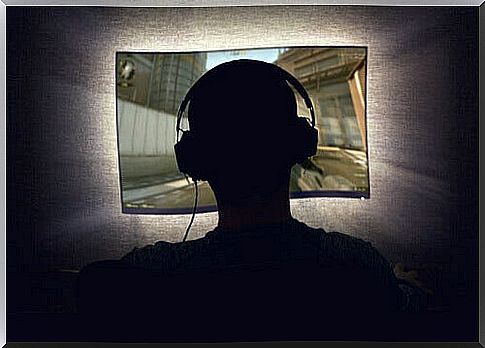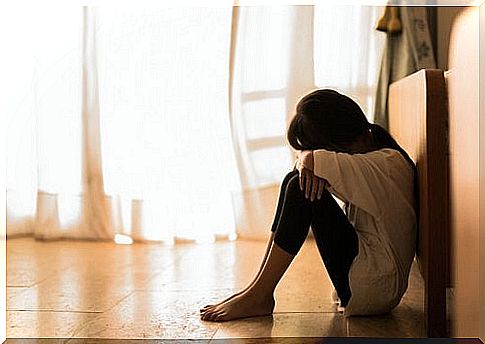Hikikomori: Japanese Young People Isolated In Their Room

The term Hikikomori refers to young Japanese people who refuse the idea of leaving their room. In Japanese culture, solitude has always been a traditional value representing the search for wisdom relating to one’s person, nature and social relationships.
In a sense it was a feudal vision, albeit a positive one; in today’s Japanese society, however, this constructive loneliness has turned into the phenomenon of pathological isolation.
Following the Second World War, Japanese society began to have a frenetic economic development, favoring an increasingly demanding and competitive pace of study and work.
Young people received an increasingly rigid education that degenerated into an educational system that promoted an iron discipline of acquiring knowledge, to the detriment of the deepening of communicative and psychological issues between the study rooms.
Faced with pressure from families and society, young Japanese have gradually developed a form of isolation unknown to the Western world : they remain closed for months or years in their rooms with no intention of returning to the real world.

Hikikomori – an expanding phenomenon
The first person to coin the term Hikikomori was the Japanese psychiatrist Tamaki Siato in his book “Hikikomori, Rescue Manual” of 2002. The author describes the young Japanese who hide in their rooms as victims of an education system and a job market. more and more suffocating and competitive. He points out that the main problem is related to poor communication between parents and children in some Japanese families.
The current Japanese society
Japanese society has developed at a dizzying speed in recent decades, but for some years now an economic crisis has begun to surface that has forced people to come up with rigorous skills and discipline to be able to climb society.
Many of the couples who have experienced economic growth have had an only child, on whom they have deposited all their hopes for a better future of life, perhaps projecting into him some frustrated desire of their youth.

Families make a significant economic effort so that their children can triumph in the working world, enrolling them in prestigious schools with the best extracurricular activities, also making them work at home without leaving them almost any space for recreation or relationships with peers.
The school in Japan
Schools in Japan are characterized by a very demanding and varied educational level and curricular path. They are built on the basis of continuous exams, homework and a strict supervision of the teacher over the pupils’ activity. On many occasions, the Japanese have intensive extracurricular sessions that involve entire afternoons and weekends spent at school.
But that’s not all, intensive camps are often organized within the school for which students sleep and eat in the classrooms, challenging each other on the various subjects trying to be the best. Many of them do not eat until they have passed all the tests they submit to.
Yet many of them never manage to fully adapt, either because they have special educational needs or because such a high level of stress causes them severe psychological disturbances. Unfortunately, there is no efficient welfare system in Japan to help young people who are increasingly troubled by these rhythms.
The relationship with peers: competition, lack of communication and oppression
Many of these children and adolescents begin to view their peers with distrust and circumspection, and many are derided for their poor results compared to the group or for other personal aspects. Young people are not assisted by any psychologist or social educator in schools, which inevitably causes the problem to escalate.

In addition to this, they see the labor market not as a tool to achieve personal independence and advance their skills, but as a hostile ground that they fear for the risk of not being up to it and failing to be productive.
Many of them find themselves alone, tense, unable to communicate, under pressure from the family and with a future working that promises to be too competitive for their abilities. If we add to all this the incredible technological expansion of the Japanese country, we are faced with an inevitable explosive cocktail: many young people are beginning to feel more comfortable in isolation and in the creation of a “virtual life”. It is their way of saying enough to society and the family.
How to find solution to Hikikomori
Hikikomori families see their children as a shame, as something to hide from their neighbors and family for fear of a scandal that will negatively affect them. They believe this is a passing problem.
However, if a young person locks himself in his room for weeks and the parents are unable to address the problem clearly, it tends to become chronic. Young people drop out of school and shut themselves up in their room in total isolation. They eat, sleep and keep their virtual pastime inside those four walls.
The world appears more affordable to them by relating to others through a computer, watching movies, reading manga magazines, playing video games, listening to music and sleeping. Their personal hygiene is very limited and they manage when it comes to cutting their hair, for example. Thus the years pass, and the epidemic is spreading by now reaching two million Hikikomori throughout Japan.
The Japanese authorities have already put in place an intervention plan aimed at stopping this huge generational problem, and are looking for solutions to meet their young people. Many psychologists indicate that the best intervention is family therapy – it is essential that the family communicate with the patient to try to get him out of his captivity.
Integration into society must take place gradually, and many times it is the healed former Hikikomori who guide and support these young people to come out of their voluntary confinement. The problem is not about a social phobia, agoraphobia or extreme shyness, problems common to other parts of the world; the way to deal with it must be different.
The best solution is of a preventive nature: Japanese society must take note of this problem and undertake to reduce the level of demand required in schools which often degenerates into the social isolation of young people.









